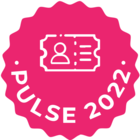Introduction
Monitoring customer goal alignment is critical to ensuring that success strategies stay relevant and impactful. Dashboards provide real-time insights into progress, allowing you to identify gaps and proactively address misalignments. This article outlines how to use dashboards effectively to track goal alignment and maintain customer satisfaction.
Step 1: Build Goal-Focused Dashboards
Create dashboards tailored to track customer goals and key metrics.
-
Define Key Metrics: Focus on metrics such as milestone completion, ROI progress, and health scores. Use Dashboards to visualize these metrics effectively.
-
Organize by Customer Segments: Segment dashboards by regions, tiers, or account owners to ensure actionable insights for each segment.
-
Leverage Visual Widgets: Use bar graphs, pie charts, and trend lines to simplify data interpretation.
Step 2: Track Progress Against Goals
Dashboards allow you to monitor progress and identify deviations from planned outcomes.
-
Use Success Plans for Data Integration: Ensure that documented goals in Success Plans are reflected in your dashboards.
-
Monitor Goal Completion Rates: Use widgets to track the percentage of completed milestones and identify overdue items.
-
Automate Data Updates: Schedule automated data refreshes to keep dashboards current without manual effort.
Step 3: Identify and Address Misalignments
Dashboards help pinpoint areas where customer goals may not align with current strategies.
-
Spot Health Score Drops: Use health score trends to detect at-risk accounts. Refer to Scorecards for monitoring detailed health metrics.
-
Analyze Gaps by Segment: Identify which segments have lower goal achievement rates and prioritize interventions.
-
Trigger Alerts for Risks: Set up notifications for significant misalignments using the Rules Engine.
Step 4: Share Insights Across Teams
Collaborate effectively by sharing dashboard insights with stakeholders.
-
Enable Role-Specific Views: Customize dashboard access for different roles, such as CSMs and executives.
-
Embed Dashboards in Collaboration Tools: Share dashboards through tools like Slack or Salesforce for seamless cross-functional collaboration.
-
Schedule Reporting Cadence: Set a regular cadence to review dashboards during team meetings or customer check-ins.
What’s Next?
The next step is to validate and adjust goals during customer check-ins, ensuring alignment with evolving priorities and needs.
Explore More
-
Guide: How to Build Basic Reports
-
Pulse Video: Delivering Value to Your Customers Across the Lifecycle
-
Pulse Video: Using Data and Digital Engagements to Drive ROI
